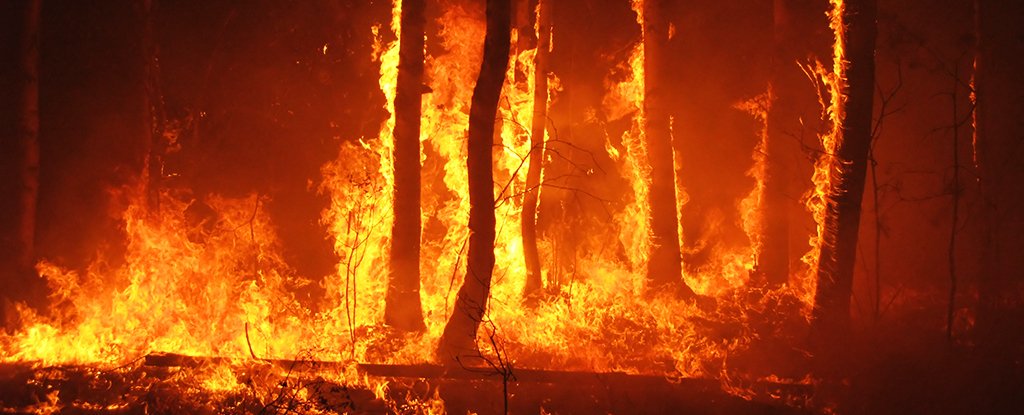
It kept going 1,000 years.
In a tremendously itemized and complete new investigation, specialists have illustrated how around a tenth of Earth's surface all of a sudden wound up noticeably canvassed in thundering flames at a point about 12,800 years prior.
The firestorm matches the one that wiped out the dinosaurs, and it was caused by parts of a comet that would have estimated around 100 kilometers (62 miles) over.
As tidy mists covered the Earth, it commenced a smaller than normal ice age that kept the planet cool for an additional thousand years, similarly as it was rising up out of 100,000 years of being shrouded in icy masses. Once the flames wore out, life could begin once more, as indicated by the global group of researchers.
"The theory is that an expansive comet divided and the pieces affected the Earth, causing this calamity," says one of the group, Adrian Melott from the University of Kansas.
"Various diverse substance marks – carbon dioxide, nitrate, alkali and others – all appear to demonstrate that a shocking 10 percent of the Earth's property surface, or around 10 million square kilometers [3.86 million square miles], was devoured by flames."
To peer once more into the consuming flames and stun influxes of this significant occasion, countless and isotopic markers were estimated from more than 170 destinations over the world, including a group of 24 researchers.
One of the bits of investigation completed was on designs in dust levels, which recommended pine timberlands were all of a sudden scorched off to be supplanted by poplar trees – a species having some expertise in making desolate progress, as you may get when your planet has been hit by a progression of huge fireballs.
Truth be told parts of the comet that deteriorated in space are still liable to skim around parts of our Solar System 13,000 years after the fact.
High convergences of platinum – frequently found in interstellar articles – and abnormal amounts of tidy were additionally noted in the examples dissected by the analysts, close by expanded centralizations of ignition mist concentrates you would hope to check whether a ton of biomass was consuming: ammonium, nitrate, and others.
Plants ceased to exist, sustenance sources would have been rare, and the beforehand withdrawing icy masses started to progress once more, say the analysts. Human culture would have needed to adjust to the harsher conditions, with populaces declining subsequently.
"Calculations propose that the effect would have drained the ozone layer, causing increments in skin malignancy and other negative wellbeing impacts," says Melott.
The group thinks such a boundless effect of comet parts, and the resulting firestorm, is in charge of that additional piece of cooling known as the Younger Dryas time frame. This generally concise blip in the planet's temperature has now and again been put down to changing sea streams.
Notwithstanding, the comet hit isn't a totally new thought, despite the fact that this most recent research goes into a lot of profundity to attempt and discover confirm for it. Researchers have been debating whether a comet affect commenced the Younger Dryas occasion for quite a while now.
Not every person concurs that the information focuses to a comet strike, yet the new investigation presents more help for the speculation, as do the antiquated carvings found in Turkey a year ago – carvings which delineate an overwhelming effect from an interstellar question.
"The effect theory is as yet a speculation, however this investigation gives a huge measure of confirmation, which we contend must be altogether clarified by a noteworthy enormous effect," says Melott.
I'm back to upvote your post, friend. Thanks for your upvote.
Downvoting a post can decrease pending rewards and make it less visible. Common reasons:
Submit
please follow me, friend
Downvoting a post can decrease pending rewards and make it less visible. Common reasons:
Submit